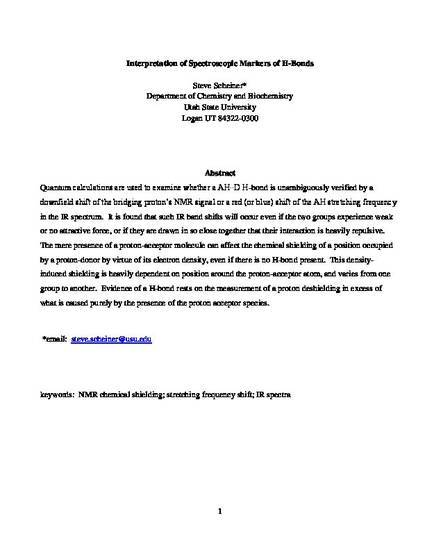
Quantum calculations are used to examine whether a AH∙∙D H-bond is unambiguously verified by a downfield shift of the bridging proton’s NMR signal or a red (or blue) shift of the AH stretching frequency in the IR spectrum. It is found that such IR band shifts will occur even if the two groups experience weak or no attractive force, or if they are drawn in so close together that their interaction is heavily repulsive. The mere presence of a proton-acceptor molecule can affect the chemical shielding of a position occupied by a proton-donor by virtue of its electron density, even if there is no H-bond present. This density-induced shielding is heavily dependent on position around the proton-acceptor atom, and varies from one group to another. Evidence of a H-bond rests on the measurement of a proton deshielding in excess of what is caused purely by the presence of the proton acceptor species.

This is the peer reviewed version of the following article: Scheiner, S. I. (2016). Interpretation of Spectroscopic Markers of Hydrogen Bonds. ChemPhysChem, 17(14), 2263–2271. http://dx.doi.org/10.1002/cphc.201600326, which has been published in final form at https://doi.org/10.1002/cphc.201600326. This article may be used for non-commercial purposes in accordance with Wiley Terms and Conditions for Use of Self-Archived Versions.